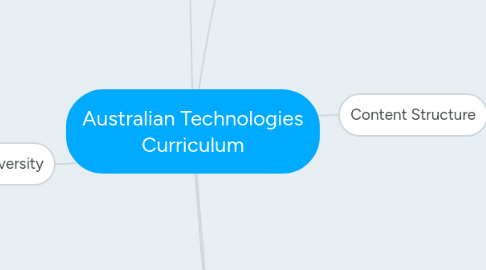
1. Curriculum Aims & Objectives
1.1. Develop students who are able to make decisions about the development and use of technology.
1.2. Provide students with opportunities to explore digital technologies and apply a practical understanding to current and future innovations.
1.3. Develop an appreciation for how technologies are developed and how they contribute to society.
1.4. Understand how technologies have changed over time.
1.5. Design, create and manipulate digital technologies responsibly and effectively.
1.6. Evaluate and critically explore digital technologies and their processes.
1.7. Make informed, ethical and sustainable technology decisions.
2. Band Level Descriptions
2.1. F - 2
2.1.1. By the end of year 2 students will have - Designed, produced and evaluated design solutions, explore how technologies meet personal and social needs, they draw, model and design digital technology ideas and they evaluate these designs.
2.2. 3 - 4
2.2.1. By the end of year 4 students will have - explored their own design ideas, used manual and digital technologies to represent ideas, become aware of how a product might change in the future and they have understood the importance of planning when designing.
2.3. 5 - 6
2.3.1. By the end of year 6 students will have - understood that products have competing considerations when sustainability and ethics are considered, they have described how technologies impact daily lives and they will have used appropriate methods and techniques to meet an identified need.
3. Student Diversity
3.1. Teachers are to plan and adjust lessons based on the range of abilities in their classroom.
3.2. Curriculum allows for teachers to be flexible with their teaching to support all students to achieve.
3.3. Students with disabilities are supported by the Disability Discrimination Act 1992 to achieve the same necessary educational standards as their peers through necessary adjustments.
3.4. EAL/D students must be supported to learn SAE at the same time as learning about technologies.
4. Content Structure
4.1. Design and Technologies
4.1.1. Knowledge and Understanding
4.1.1.1. How technology affects people's lives.
4.1.1.2. Elements of technology design.
4.1.2. Processes and Production Skills
4.1.2.1. Investigating and exploring needs or opportunities.
4.1.2.2. Evaluating design ideas.
4.1.2.3. Producing and evaluating designed solutions.
4.2. Digital Technologies
4.2.1. Knowledge and Understanding
4.2.1.1. Data representation.
4.2.1.2. Features of digital systems.
4.2.1.3. How information systems impact people's lives.
4.2.2. Processes and Production Skills
4.2.2.1. Data management and interpretation.
4.2.2.2. Competence with different digital systems.
4.2.2.3. Defining problems and creating a solution.
4.2.2.4. Communicating effectively and safely online.
5. General Capabilities
5.1. Literacy
5.1.1. Understanding how technological information is represented.
5.2. Numeracy
5.2.1. Understand and interpret mathematical skills in real life technology situations.
5.3. ICT
5.3.1. Strengthens key ICT concepts and skills.
5.4. Critical and Creative Thinking
5.4.1. Students consider how technologies have impacted their lives.
5.5. Personal and Social Capability
5.5.1. Help students develop their social awareness.
5.6. Ethical Understanding
5.6.1. Students are supported to develop an ethical understanding when using and sharing technologies.
5.7. Intercultural Understanding
5.7.1. Understand how technology can be used to better communicate with people in their diverse community.
6. Cross-curriculum priorities
6.1. Aboriginal and Torres Strait Islander histories and cultures
6.1.1. Explore and understand the knowledge and history of their technologies.
6.2. Asia and Australia's engagement with Asia
6.2.1. Explore the technologies of our neighbouring countries.
6.3. Sustainability
6.3.1. Supports the creation of more sustainable ways of living.
